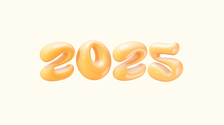Korina Gattoc
Japanese question: How/When to use は (wa/ha), が(ga), を(wo) in a sentence.
Hello! I am just starting out learning Japanese. I am getting confused on when to use wa, ga, and wo.
Why is "Ga" sometimes used in place of "Wa" near the beginning of a sentence?
When/why do you sometimes place "wo" towards the end of the sentence?
Example:
toriniku to pan wo tabemasu (とりにくとぱんをたべます)
Why is the "Wo" there?
Thank you for your help and your time! :)
1 дек. 2017 г., 8:16
Ответы · 13
2
Hi Korina,
As with English, the Japanese language has different relation words (called particles).
をー This is the easiest to understand - it always connects a verb to it's direct object.
りんごをたべます = I will eat an apple (The apple is the direct object of the action "to eat").
まどをあけます = I will open the window (Window - the direct object of "to open").
は and が are more confusing, so I will tell you how I understand them, but you should also wait for natives to answer.
はー Generally it introduces the thing that we are talking about, and brings it to our attention.
ゆきさんはかんこくにいきました = Ms. Yuki went to Korea (Regarding Ms. Yuki, she went to Korea). The part ゆきさんはenphasizes that I want to talk about yuki and what she is doing.
がー Instead of introducing something and bringing it to our attention, it answers the question of "what\who" and so on.
ゆきさんがかんこくにいきました = Ms. Yuki went to Korea (Ms. Yuki is the one who went to Korea). In this sentence, both me and the one I am talking to knows that SOMEONE went to Korea. But only I know who it was! so it's like he asks "Who is the one who went to Korea?" and I answer "YUKI is the one who went to Korea" (In English, you would emphasize the name YUKI when you talk).
In this sentence, I don't necessarily want to talk and tell what Yuki is doing. I just want to "fill the missing information" regarding who went to Korea.
1 декабря 2017 г.
1
The short answer:
- を marks the object of a particular sentence:
"Mark eats an apple." Here 'an apple' is the object, so it will be marked with WO.
- が is the subject marker. In the example above, 'Mark' would be the subject of the sentence. It is the one who or what is doing the eating.
- は is the topic marker. This is where most new Japanese students get confused. The main difference between the subject of a sentence and it's topic is that the subject trumps the topic in a particular sentence, so to speak. A topic can span more sentences at once, without ever being repeated again - it's implied. A subject trumps the topic in a way that when they both appear in the same sentence, the topic is the focus of the idea, but the subject is still doing the mentioned action.
The は will in most cases answer the questions "about who/what?" or "regarding who/what?", where the が will in most cases answer the question "who/what?"
This is not nearly enough to tackle the idea of these particles, but in my opinion, it's sufficient to get you going. After many, many mistakes, you'll get a hang of it, trust me :D
Good luck!
1 декабря 2017 г.
1
toriniku to pan wo (watashi ga/wa)tabemasu.
1 декабря 2017 г.
• Sentence Patterns (を):
1) [ Noun ] は[ Noun ] を [ Verb ].
私はビールを飲みました。(Watashi wa bi-ru o nomimashita. = I drank some beer.)
2) [ Noun ] は[ Noun: PERSON / THING ] を[ Verb – TE Form ] imasu.
ミスタードーナツはドーナツを作っています。(Mista- do-natsu wa do-natsu o tsukutte imasu. = I make donuts at Mister Donuts.)
3) [ Noun: PERSON / THING ] を[ Verb – TE Form ] imasu.
今何をしていますか。(Ima nani o shite imasu ka. = What are you doing now?)
4) [ Noun: THING ] を[ Verb – TE Form ] mo ii desu ka.
ドーアを占めてもいいですか。(Do-a o shimete mo ii desu ka. = May I close the door?)
5) [ Noun: THING ] を[ Verb – TE Form ] kudasai.
メールを見せてください。(Me-ru o misete kudasai. = Please show me the e-mail.)
6) “[ Noun: THING ] をmotte imasu.” IS THE SAME WITH “[ Noun: THING ] が arimasu.”
ペンをもっています。(Pen o motte imasu. = I have a pen.)
7) [ Noun: PERSON ] を[ Verb: INSTRANSITIVE ].
私は娘を自由に遊ばせました。(Watashi wa musume o jiyuu ni asobasemashita. = I let my daughter play freely.)
In conversations,
を、へ、が、and はcan sometimes be omitted from the sentence without altering its meaning.
Gohan (o) taberu?
Ashita Makati (e) ikanai?
Pen (ga) aru?
Kono ko-hi (wa) oishii ne.
References Used:
1) My old Nihongo notebook with lecture notes and explanations from my sensei
2) My Nihongo Kaiwa book
Whew! 疲れった。Hehe :)
4 декабря 2017 г.
• Sentence Patterns (が):
1) [ Noun ] は[ Noun ] が [ Adjective: SUKI / KIRAI / HOSHII ] desu.
私は新しいカメラがほしいです。(Watashi wa atarashii kamera ga hoshii desu. = I want a new camera.)
2) [ Noun ], [ Noun: NANI / DOKO / ITSU ] がii desu ka.
プレセント、何がいいですか。(Puresento, nani ga ii desu ka. = What would you like for a present?)
3) [ Noun ] は[ Noun ] が [ Adjective ] desu.
ロリータさんは神が短いです。(Rori-ta san wa kami ga mijikai desu. = Lolita’s hair is short.)
4) [ Noun ] がdekimasu. / (Verb - Dictionary Form) koto ga dekimasu.
バスケットボールができます。(Basukettobo-ru ga dekimasu. = I can play basketball.)
ジェーンさんは日本語の歌ことができます。(Mira-san wa nihongo no utau koto ga dekimasu. = Ms. Jenn can sing in Japanese.)
私はトラクターを運転することができます。(Watashi wa torakuta- o unten suru koto ga dekimasu. = I can drive a tractor.)
5) a) [ Noun ] がarimasu.
{No need to put 私は here} 質問があります。(Shitsumon ga arimasu. = I have a question.)
b) [Verb - TA Form) koto が arimasu.
私は日本へ行ったことがあります。(Watashi wa nihon e itta koto ga arimasu. = I have been to Japan.)
c) [ Noun: PLACE WHERE IT’S HELD ] de [ Noun: THE EVENT ] ga arimasu
今マンダリンホテルでワインパーティーがあります。(Ima mandarin hoteru de wain pa-chi ga arimasu. = There’s a wine party currently being held at the Mandarin Hotel.)
を
• [ を ] is an object marker.
• Main Usage of [ を ]:
1) をis used to indicates the direct object of the sentence. (See sentence pattern #1.)
2) をis used to denote a place where a person or a thing passes.
公園を散歩しまう。(Kouen o sanposhimasu. = I’ll take a walk in the park.)
3) をis used to indicate objects of TRANSITIVE verbs. (Compare to Usage #7 of が)
私は日本語を話します。(Watashi wa nihongo o hanashimasu. = I speak Japanese.)
4) を(in “causative” sentences) is used to indicate the subject of an action when the verb is INTRANSITIVE. (See sentence pattern #7.)
4 декабря 2017 г.
Подробнее
Все еще не нашли ответы?
Напишите свои вопросы, и пусть вам помогут носители языка!
Korina Gattoc
Языковые навыки
английский, японский
Изучаемый язык
японский
Статьи, которые тебе могут быть интересны

Preparing for Interview Success
18 нравится · 10 Комментариев

Essential American Books for Language Learners: Learn English and Culture in One Go
35 нравится · 5 Комментариев

Setting Goals for Your Language Learning Journey in 2025: A Guide for ESL Speakers
10 нравится · 2 Комментариев
Еще статьи
